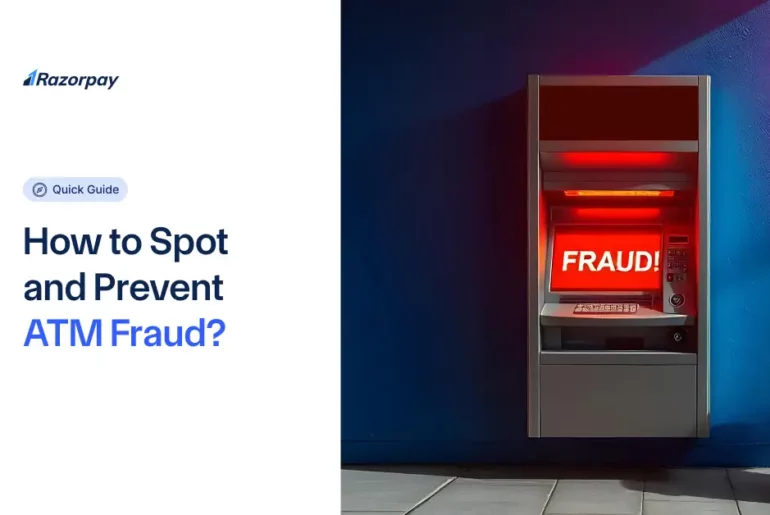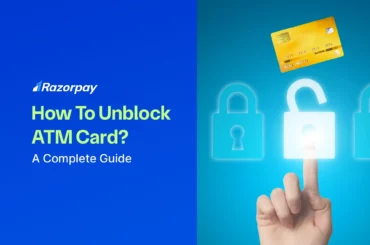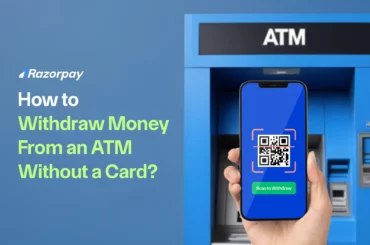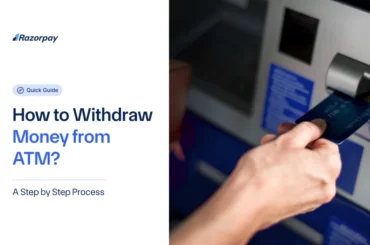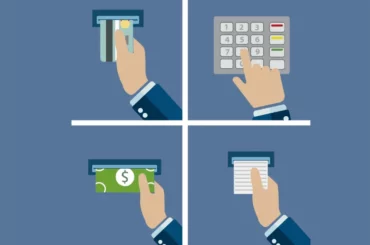ATM fraud refers to unauthorized access to your personal or financial information during ATM transactions, making it crucial to safeguard your data to avoid financial losses and ensure secure electronic transactions.
In this article, you’ll learn about the types of ATM fraud, how to detect and prevent them, and practical tips like using ATM cards safely, blocking/unblocking your card, and securing transactions. Understanding these measures helps you minimize risks and use ATMs confidently.
Table of Contents
What Is ATM Fraud?
ATM fraud refers to financial scams that occur through ATM terminals, where fraudsters gain unauthorized access to your ATM card or account details to steal money.
ATMs have two main components: a computer that runs the system and a secure vault that stores cash. Like all hardware and software, they have vulnerabilities. The external parts, like card readers and keypads, are especially prone to tampering. Fraudsters often use tools, such as lock picks, to break into these parts.
ATMs running outdated or unpatched Windows systems are particularly at risk. Hackers can exploit these weaknesses to introduce malware via portable devices, allowing them to steal data or take control of the ATM. With various malware strains targeting ATMs, it’s essential to improve security measures.
Various Types of ATM Fraud
Many believe that physical robbery of ATM machines poses the greatest threat. However, the evolving landscape of ATM fraud shows that digital and technical attacks are far more diverse and damaging. Fraudsters employ various methods to exploit vulnerabilities, often targeting unsuspecting customers. Here are some common types of ATM scams:
1. Card Shimming:
This involves a small device inserted into the card reader that steals data from your ATM card’s chip. Unlike card skimming, which works with the magnetic strip, shimming targets the more secure chip on the card. Fraudsters use this stolen data to create cloned cards, which they can then use for unauthorized transactions, putting your account at serious risk.
2. Card Skimming:
One of the most well-known forms of ATM fraud, card skimming happens when fraudsters attach a device over the card slot of the ATM machine. This device reads the details from the magnetic strip of your card while hidden cameras, often placed nearby, record your PIN as you enter it. The scammer then uses the stolen card information to create counterfeit cards and withdraw money from your account.
3. Card Trapping:
In this scam, fraudsters tamper with the card slot to trap your card inside the ATM. The scammer may use adhesives or modified parts to prevent the card from coming out. Once you leave, assuming your card is stuck, the fraudster retrieves it and uses it for fraudulent transactions, often without your immediate knowledge.
4. Jamming of the Keyboard:
This type of atm machine fraud involves tampering with the ATM keypad, preventing you from completing your transaction. The fraudster jams the keys or installs an overlay to stop you from entering your PIN correctly. Once you leave the machine, the fraudster can access your card, retrieve cash, or even try to force a transaction.
5. Phishing:
Phishing is a method where fraudsters send fake messages, often disguised as official communications from your bank, asking for sensitive information such as your card details or PIN. These messages can appear via email, text messages, or even phone calls. They usually contain links to fake websites that look like your bank’s official site, tricking you into entering your login information, which the fraudsters then use to steal money from your account.
6. SMS Fraud:
In SMS fraud, scammers send text messages claiming you’ve won a prize or alerting you to problems with your ATM card. These messages often prompt you to reply with sensitive information, such as your account details, in order to claim the reward or resolve the issue. Once you share this information, the fraudsters use it to access and drain your bank account.
Real Scenarios of ATM Fraud
1. Case 1: ATM Card Swap Scam in Delhi
In Delhi, a retired Indian Air Force personnel became the victim of an ATM card swap scam. While using the ATM at the J Block in Vikaspuri, an individual posing as a helpful bystander swapped the victim’s debit card with a fake one. The victim only realized the fraud when he attempted to withdraw money and discovered his account was empty. The police arrested the scammer, identified as Shivam Kumar, who was found to have been involved in 28 similar cases. Through CCTV footage and technical surveillance, the authorities tracked down Kumar and recovered the stolen card.
2. Case 2: ATM Card Fraud in Chandigarh
In Chandigarh, an ATM card fraud case unfolded when a woman, Jasleen Kaur, reported ₹30,000 being stolen from her bank account. The fraudster used her card to withdraw money across four transactions, despite Kaur never sharing her PIN. Police initiated an investigation, but the suspect remained unidentified. This case underscores the risks of ATM fraud even when customers take precautions with their ATM cards and PINs.
3. Case 3: ATM Card Swap Fraud at Sector-43 Bus Stand, Chandigarh
Another ATM scam took place in Chandigarh when Mahavir Prasad, a resident of Mohali, was duped out of ₹2.1 lakh in an ATM card swap fraud. While using the ATM at the Sector-43 bus stand, an unknown individual offered assistance after Prasad’s withdrawal attempt failed. The fraudster swapped his card with a fake one and left unnoticed. The victim realized the fraud later when unauthorized transactions were made from his account. A police case was filed, and the investigation is still ongoing.
Tips for Preventing ATM Frauds
1. Choosing Secure ATMs
Always opt for ATMs located in well-lit, busy areas with surveillance cameras. Avoid using machines that appear abandoned, vandalized, or in isolated locations. Never enter ATMs that do not have a guard or are in desolate areas, as these are prime targets for fraudsters.
2. Vigilant Inspection and Actions:
Before using any ATM, thoroughly inspect the machine for signs of tampering, particularly around the card reader and keypad. If you notice any unusual devices attached to the machine, do not attempt to remove them yourself. Instead, report the issue to the bank immediately. If you suspect fraud after using the machine, block your card as soon as possible and find a safe location to alert the bank.
3. Personal Security Measures:
Always cover the keypad with your hand when entering your PIN, even if there is a queue behind you. Be quick and discreet when removing your card, cash, and receipt after completing a transaction to avoid drawing attention. Also, never remove someone else’s card from the ATM, as this could lead to misunderstandings or false accusations.
4. Additional Vigilance Measures:
Pay close attention to the ATM for any unfamiliar devices attached to it. Look for hidden cameras placed in the vicinity, often targeting the keypad or your card entry. Stay alert to the behavior of people around the ATM; suspicious individuals inside or near the machine could signal a potential scam.
5. General Security Practices:
Never share sensitive details like your card’s expiration date, PIN, or CVV with anyone. Use strong, unique passwords for your banking apps and enable two-factor authentication whenever possible. Avoid clicking on suspicious links in emails, SMS messages, or social media platforms, as they could lead to phishing attacks.
Everything You Need to Be Aware About ATM Frauds
ATMs have become an essential part of daily life, offering millions of people quick and convenient access to cash. With ATMs widely available in numerous locations, they eliminate the need to visit traditional bank branches, making it easier to manage your money at any time of day or night.
However, the increasing use of ATMs has also led to increased ATM fraud. Fraudsters constantly evolve their tactics, making ATM machines prime targets for various types of scams. ATM fraud not only involves illegal access to your personal information to make unauthorized withdrawals but also includes physical theft from machines, such as stealing cash or even the ATM itself.
Understanding ATM fraud is crucial for protecting yourself. Fraud can occur in many forms, from card skimming and shimming to more advanced methods involving malware or phishing. It’s important to recognize these threats and take steps to safeguard your personal information. By staying aware of the different types of ATM fraud and following safety precautions, you can significantly reduce your risk of falling victim to these scams.
Conclusion
This article has covered several types of ATM fraud, including card skimming, card trapping, and phishing, each presenting serious risks to both personal and financial security. As fraud techniques evolve, it’s crucial to stay informed and be aware of the latest scams targeting ATM users.
To protect yourself, always use secure PIN practices, select ATMs in well-lit, monitored locations, and take care of your security after transactions by swiftly collecting your card, cash, and receipt. By remaining vigilant and following the preventive tips outlined, you can significantly reduce the chances of falling victim to ATM fraud.
Stay alert, stay cautious, and always implement these safety measures to ensure your ATM transactions remain secure.
Frequently Asked Questions (FAQ’s):
1. Do banks refund money lost in scams?
In many cases, banks will refund the money lost in ATM machine scam, but this depends on the situation and how quickly the fraud is reported. If you notice unauthorized transactions on your account, contact your bank immediately to block your card and initiate an investigation.
2. What information does a fraudster need?
Fraudsters typically require sensitive details such as your ATM card number, PIN, CVV, and sometimes personal information like your name and address. With this information, they can clone your card or access your bank account for unauthorized transactions.
3. How to investigate an ATM fraud?
If you suspect ATM fraud, the first step is to report the incident to your bank. The bank will investigate by reviewing transaction logs, monitoring security footage, and possibly contacting law enforcement.
4. What is the most common ATM fraud?
Card skimming is the most common type of ATM fraud. In this scam, fraudsters attach a device to the ATM card reader to capture the magnetic strip data from your card. Often, hidden cameras are used to record your PIN as you enter it. The fraudsters then use this stolen information to create cloned cards and withdraw money from your account.
5. How do I know if there is a skimmer in the ATM?
To identify a skimmer, look for any unusual or added devices around the card slot or keypad. Skimmers are often thin, small, and discreet, blending in with the ATM’s original design. If you notice any loose or awkwardly positioned parts, or if the card slot feels unusually tight, it could be a sign of a skimmer. Always check the machine before using it, and immediately report any suspicious findings to your bank.
6. Do banks refund scammed money?
As previously mentioned, banks may refund money lost in ATM scams, but this depends on the specifics of the case. If fraud is detected quickly and reported to the bank, you have a higher chance of receiving a refund. It’s essential to act fast, block your card, and report the fraud to your bank to ensure the best possible outcome.

